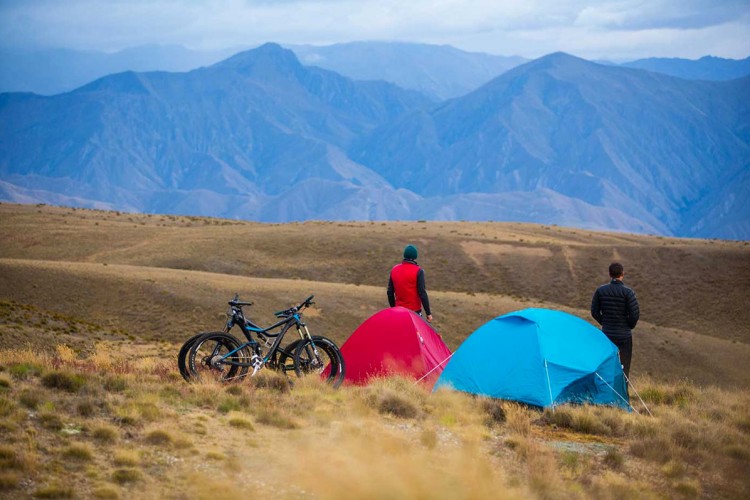Just so you don’t get the wrong idea, I’m not a racer. I have done one mountain bike race in the past decade, and this lone attempt at competitive cycling ended after about fourteen hours in the woods with a DNF in the standings. To avoid a similar result in the 2019 Pisgah Stage Race, I rode my bike a few times this Spring, and then said “screw it” and went skiing instead. Over the course of five days of racing, I frequently regretted that decision.
The moment I arrived at the kickoff ceremony at the beginning of the week, I realized the event would be something special. As we enjoyed a delicious meal and a beer from Oskar Blues, Race Director Todd Branham opened by recognizing and welcoming the international racers who came from eight different countries to experience Pisgah. While he demonstrated proper southern hospitality, the Western North Carolina weather showed its teeth, and a torrential downpour had everyone expecting a sloppy Stage One.
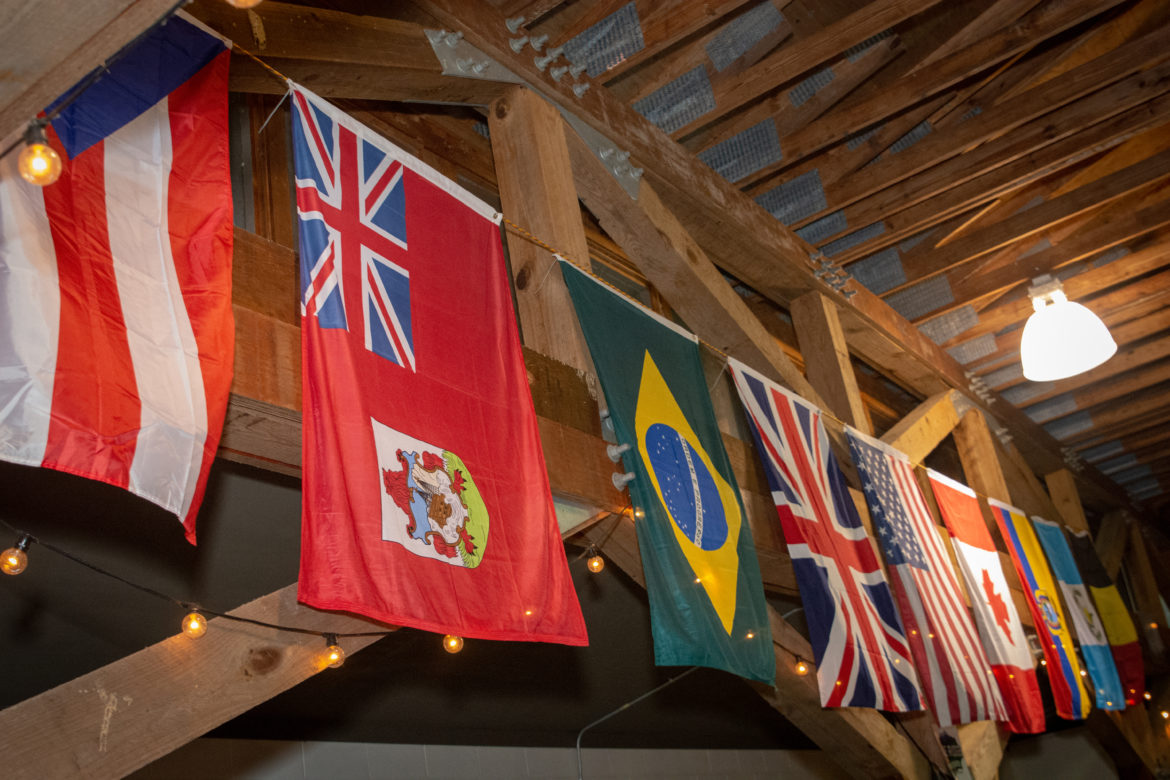
CLIF’s Looking Glass Route started off with a bang, and the field climbed just 3.5 miles before the enduro descent down Daniel Ridge. Having a timed enduro section each day is a great way to keep things interesting for folks like myself who are a little more gravity-oriented. Throughout the week I would regularly wish for a lighter, more efficient bike, but the downhills gave my Trance more than a few opportunities to shine.
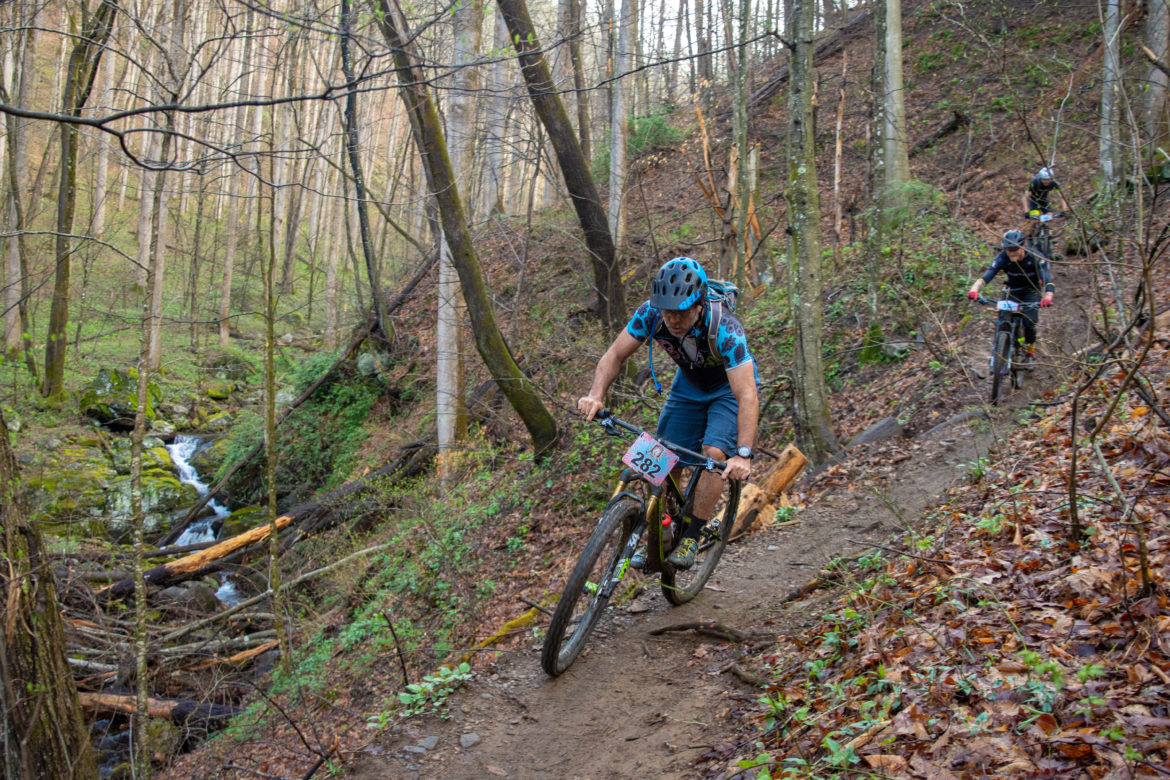
After the enduro warmup, it was time to settle in for a grueling gravel climb that went straight into a wet Farlow Gap. Farlow was arguably the toughest and most technical trail of the week, and it was a perfect way to set the tone for anyone new to Pisgah.
Stage Two, the Sunset Motel’s Promised Land Route, ups the ante. With 3,878 feet of climbing, it features a similar elevation gain to day one, but it’s 7.5 miles longer. Plenty of singletrack climbing on the Mullinax and Squirrel Gap trails culminated in a gravel grind in order to earn the 2-mile descent down Black Mountain. Black Mountain is one of the area’s most famous trails and the lower section of the descent is one of the few places you might hear the word “flow” used to describe a trail in Pisgah.

I woke up on day three feeling like I got hit by a bus – the race was clearly starting to take its toll. Unfortunately for me, the Sycamore Cycles’ White Squirrel Route was the “Queen Stage,” with half again as much climbing as the previous day. It felt like we rode every trail in the forest, but highlights included a three-mile descent down the rugged Avery Creek trail followed by the Bennett Gap enduro. I left it all out there on Bennett, which meant the gravel climb back up to Black Mountain was particularly painful. Even though I was looking forward to the final descent, I could tell the tank was empty and I ended up on the ground twice. Still, crossing the finish line was especially gratifying because it meant that the majority of the race was behind me.
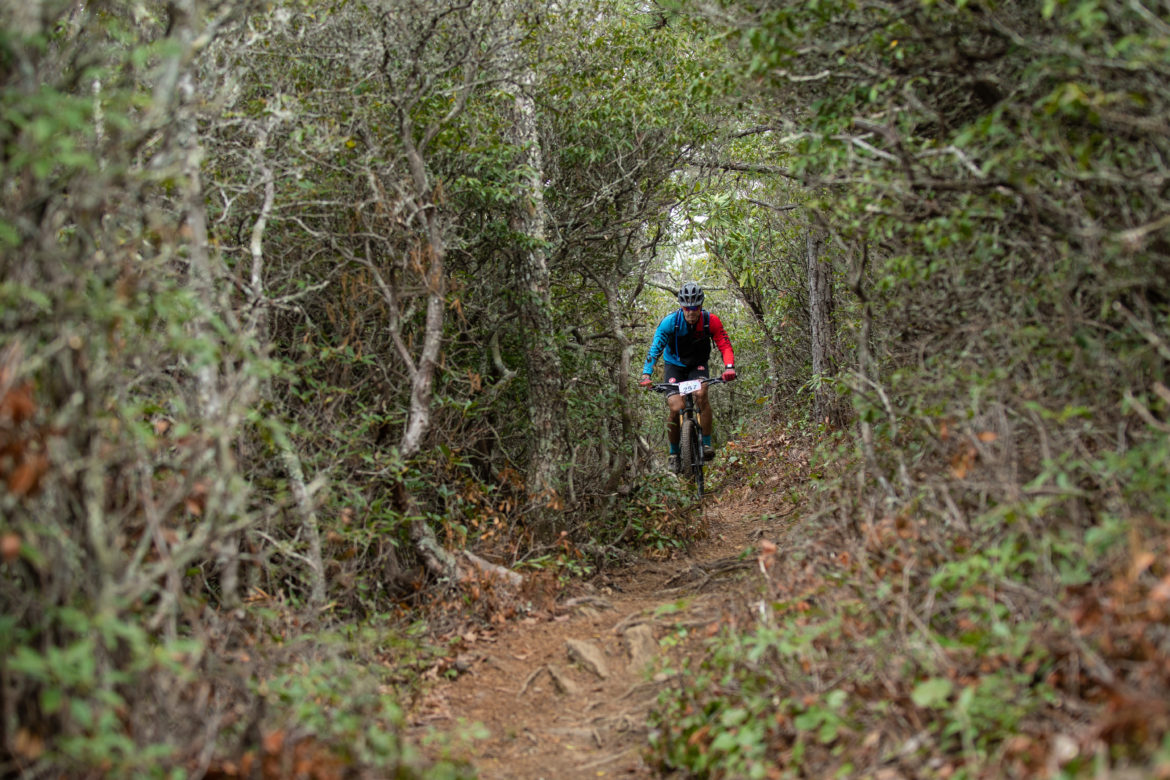
Driving from Asheville to the Stage Four starting area via the Blue Ridge Parkway gave me a glimpse of what to expect. A hard downpour, thick fog, and howling winds made me want to get a woodstove and do some knitting instead of riding, but there’s no rest for the weary.
Fortunately, as we were getting drenched in the starting line, Branham made the decision to cut the course short by about 9 miles. Eureka. Instead of slogging through singletrack, it was a sprint to the top of the Laurel Mountain trail. As I reached the top the rain began to let up, which made for a nice, greasy descent down Pilot Rock.
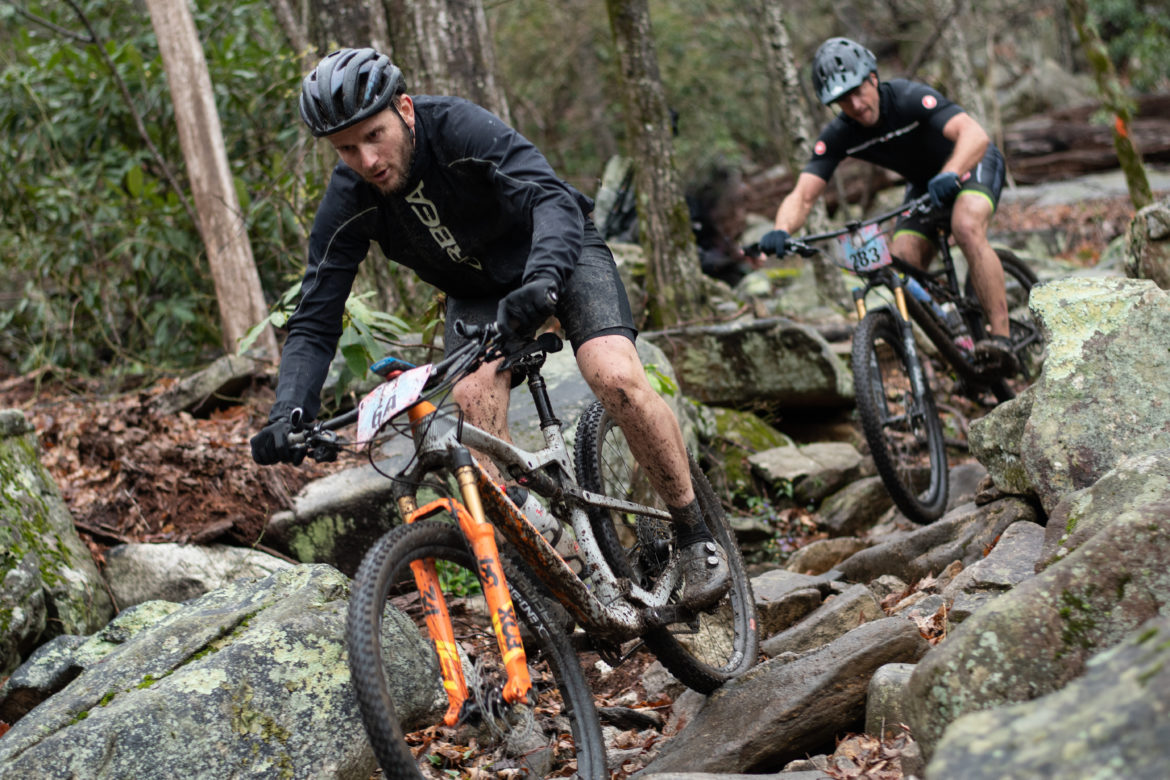
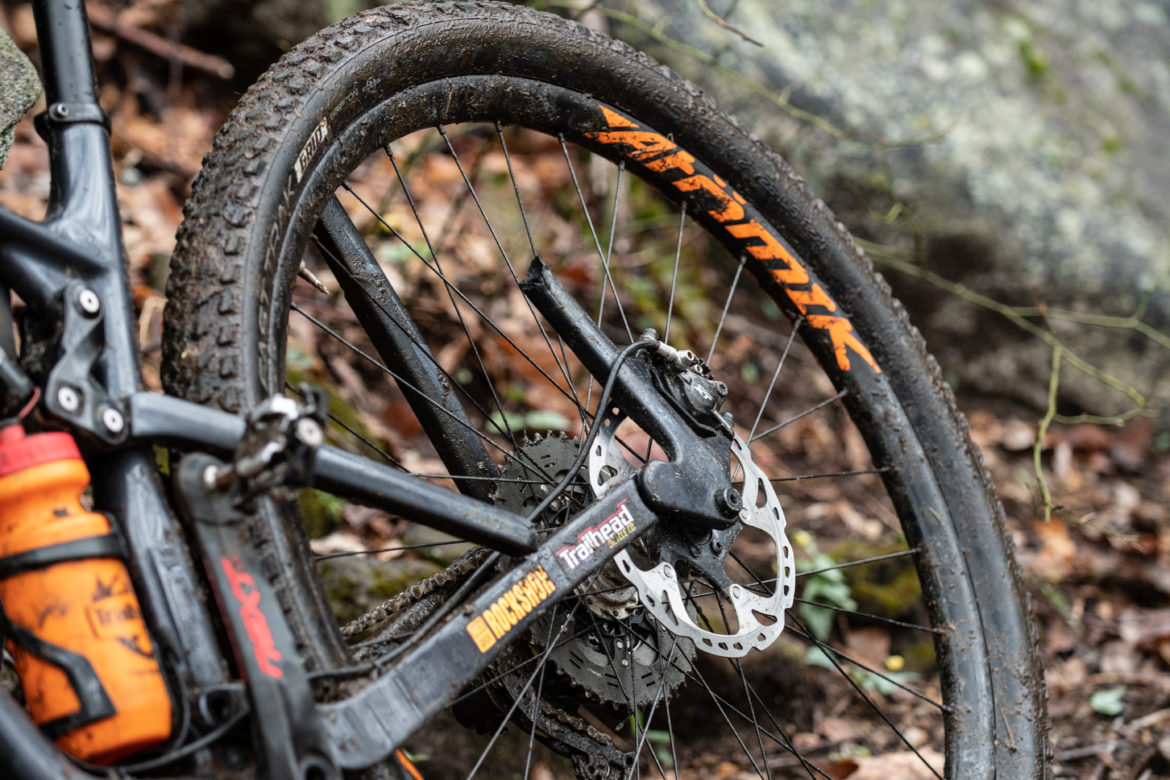
Stage 5 was supposed to be the easiest day, with just 27 miles and a mere 3,000 feet of climbing. It was brutal. With two main climbs accounting for the bulk of the elevation gain, the only thing that kept me going was the knowledge that it was almost over. And a piece of bacon halfway through helped too. And a shot of whiskey before the final descent.
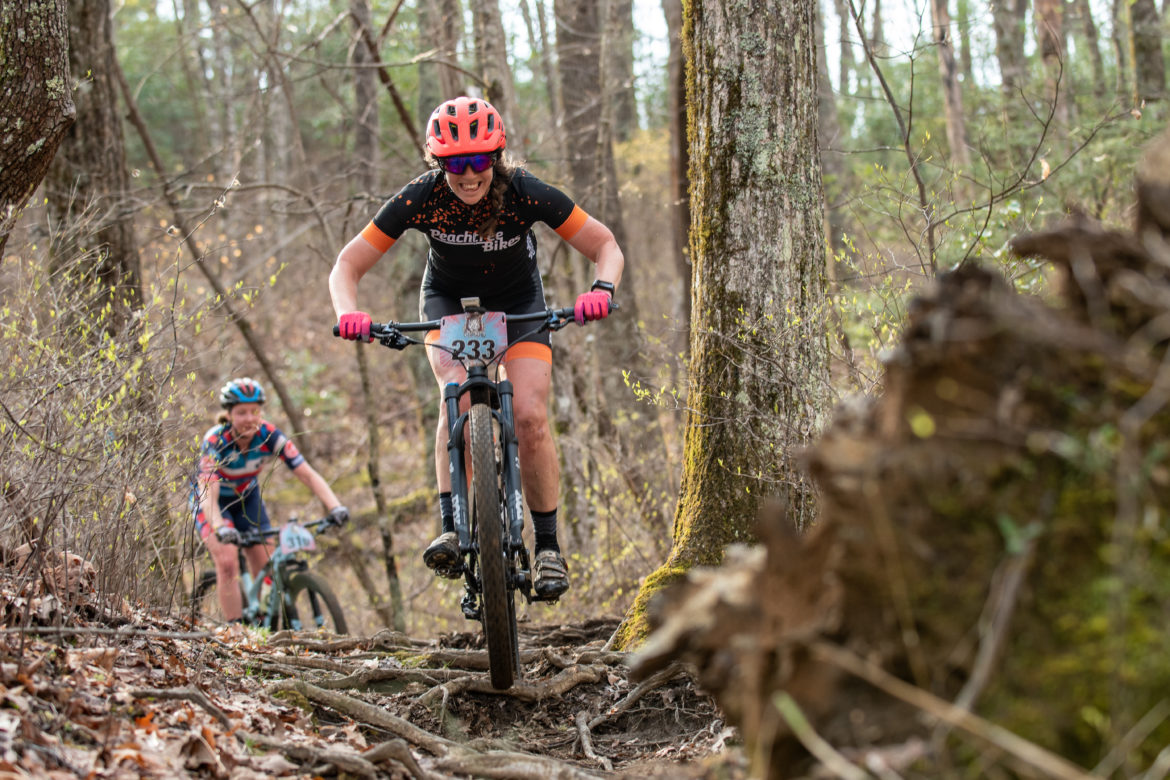
Whiskey or not, the feeling crossing the finish line of Stage 5 was euphoric. Stage racing is incredibly tough, both physically and mentally. I (somewhat) regularly log some long days in the saddle, but they’re always followed by at least a couple days of rest. Riding some of the most rugged trails in the country at race pace takes a toll, and doing it five days in a row quickly adds up. But, the incredible production of the Pisgah Stage Race and the camaraderie among riders ensures that the experience is well worth the effort.
Five days of racing teaches you some painful but valuable lessons. In particular, I learned that you have to ignore the performance of the people around you and race your own race. Everyone is different. Some people are fast uphill, others blaze the flats, and some do their best with gravity on their side. I’m not much of a standout anywhere, but I got the best results when I marched to the beat of my own drum.
All in all, the Pisgah Stage Race was an incredible experience. Spending that much time racing is not only physically rewarding, you form lasting friendships in a way single-day events just can’t. This competition has me excited for a whole season of races, but I doubt any will compare to the Pisgah Stage Race. Until next year.















